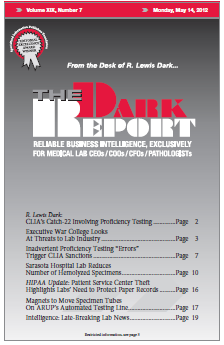CEO SUMMARY: In Salt Lake City, Utah, work is underway to pioneer use of an electro-magnetic conveyor system to automate the movement of large volumes of lab test specimens throughout the testing facility of ARUP Laboratories. Within two years, this new lab automation technology could allow the reference lab to accommodate a 60% increase in …
Magnets to Move Tubes on ARUP’s Testing Line Read More »
To access this post, you must purchase The Dark Report.


